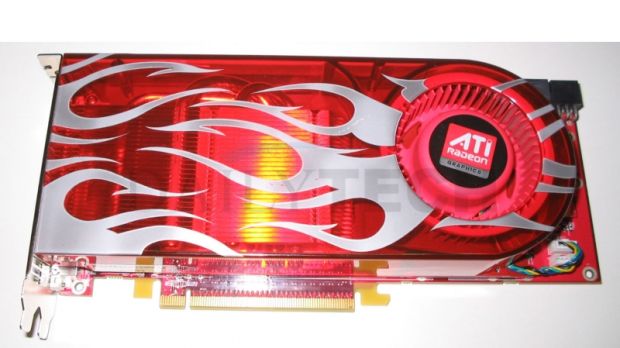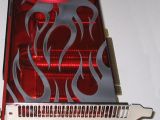AMD is currently informing a select group of journalists in Tunisia about the new series of products they have prepared. But as some of them are struggling to get as much information as possible about these new cards, some websites have taken the benchmarks performed on some of the cards and have released them, with no concern towards NDA whatsoever. The guys over at Anandtech?s news website, DailyTech, have tested the ATI Radeon HD 2900 XT (320 stream processors, 512MB GDDR3 clocked at 1650MHz running across a 512-bit wide memory interface which results in a 105.6GB/s memory bandwidth) against the NVIDIA 8800GTS 640MB (128 stream processors, 640MB GDDR3 clocked at 1600MHz, 320-bit wide memory interface with only a 64GB/s memory bandwidth).
The benchmarking platform was comprised of an Intel Core 2 Extreme QX6700 processor, 2x1GB DDR2-800, Intel D975XBX2 BadAxe2 motherboard, Windows XP as the operating system, Catalyst 8.361 RC4 drivers for ATI and ForceWare 158.19 drivers for NVIDIA. They used several games and a couple of benchmarks to asses the boards capabilities, and were able to come out with the following results: in Call of Duty 2, 2900 XT got 73.5FPS while 8800GTS scored 56.7FPS; Company of Heroes, ATI 92.1FPS, NVIDIA 90.1; F.E.A.R., ATI 84FPS, NVIDIA 83.3FPS, HL2 Episode 1, ATI 112FPS, NVIDIA 119.2FPS, Oblivion, ATI 47.9FPS, NVIDIA 39.5FPS, 3DMark06, ATI 11447, NVIDIA 9836.
After this series of tests, the ATI Radeon HD 2900 XT was thrown into battle against the NVIDIA Quadro FX 5500 professional graphics card. Interestingly enough, NVIDIA also has the Quadro FX 5600 model, which powers the Quadro Plex VCS Model IV system and would also be a DX10-based competitor, but I guess it wasn?t available at the time. These tests also placed the ATI graphics card well above NVIDIA?s offering, but one thing still puzzles me; we are talking about a card that uses almost three times as many stream processors as the competition, with almost twice the width of the memory interface, and still the results come dramatically close to one another, in some of the games, practically minimal. Why is that?
I used to think that it has something to do with DX10-based products, but that was when the tests were performed on a DX9-series graphics card and a DX10 series one; that was understandable. But come on, same hardware support, maybe with some features in favor of one against the other, but still, 0.7FPS increase in F.E.A.R.? That?s absurd. Maybe ATI will blame their graphics driver, which, let?s give them the benefit of the doubt, may not be in its final version, and driver tweaks usually render more frames per second, but this is too much. And as more specs are leaked from websites all around the world, apparently there are two contradictory affirmations about the unified shader architecture used by ATI. In one case we?ve learned that the 320 stream processors are made out of 64 unified shaders in a vectorial 4 + 1 scalar format, and on another occasion it seems that it?s actually a case of Vect5, which ?is (...) directly comparable to NVIDIA?. I guess I?ll let AMD tell me about the real deal from an official release.

 14 DAY TRIAL //
14 DAY TRIAL // 
